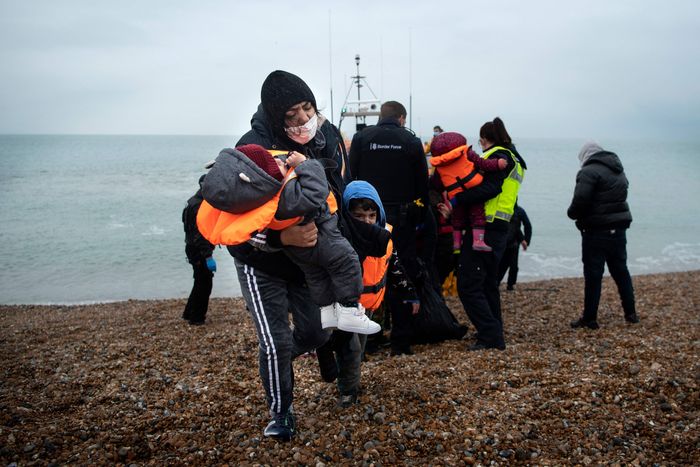Illegal border crossings into the European Union in 2021 were the highest since 2017, indicating the bloc hasn’t resolved an issue that has dogged it in recent years.
Authorities in member countries reported almost 200,000 migrants tried to cross into the EU last year, a 57% increase compared with 2020 and about a third more than in 2019. Covid-19 restrictions in 2020 in North Africa and other areas stemmed the flow.
Crossings on the central Mediterranean route—mostly from Libya and Tunisia into southern Italy—rose 83% last year to more than 65,000, making it again the most popular route, according to preliminary figures from Frontex, the EU’s border-control agency.
Stemming the flow of illegal migration has been a point of contention between EU countries, coming to the fore in November when thousands of migrants massed on the Belarus border with Poland. At the time, Poland complained that Germany, which doesn’t share a border with Belarus, held bilateral talks with the former Soviet republic.
Arrivals at the Polish border rose to almost 8,000 in 2021, from less than 1,000 in each of the previous two years.
The United Nations refugee agency estimates that last year, about 1,800 people who tried to cross the Mediterranean and enter the EU illegally died or are missing. Migrants also have died while continuing their trip once inside the EU. In November, at least 27 migrants died in the English Channel trying to cross into the U.K. from France.

Migrants are helped ashore after being rescued while crossing the English Channel.
Photo: ben stansall/Agence France-Presse/Getty Images
Failure to find a coordinated response to illegal migration has hindered the EU’s attempt to resolve the problem. Italy has long asked to distribute migrants that arrive on its shores to other EU countries, a request that has been ignored by many member states. In response, for a period, Italy allowed migrants to continue their travels to countries further north.
Crossings along the eastern Mediterranean route, mostly from Turkey into Greece, held steady last year at about 20,000, while arrivals from the Balkans more than doubled to more than 60,000.
Syrians made up the largest group last year, followed by Tunisians, Moroccans, Algerians and Afghans, according to Frontex. Women accounted for fewer than one in 10 of those who arrived.
The Frontex numbers only include people stopped as they try to enter the EU. The agency doesn’t have an estimate for how many people entered undetected last year. On some routes, such as the sea crossing to Italy, most migrants are detected and registered because they are picked up at sea or detained as soon as they land. But for some land routes, national authorities must guess how many migrants are crossing undetected.
The ebbs and flows of where the crossings occur show the effects of coordinated efforts between the EU, or individual members, and the countries from where the migrants arrive. Collaboration between Italian and North African governments largely shut down the Central Mediterranean route after crossings reached almost 200,000 in 2016. That dropped to less than 12,000 in 2019, but has since risen.
Greece received almost 1 million migrants in 2015, but that number plunged after Turkey reached an agreement with the EU in 2016 to stop the crossings and take back migrants in return for a large payment.
Write to Eric Sylvers at [email protected]
Copyright ©2022 Dow Jones & Company, Inc. All Rights Reserved. 87990cbe856818d5eddac44c7b1cdeb8








